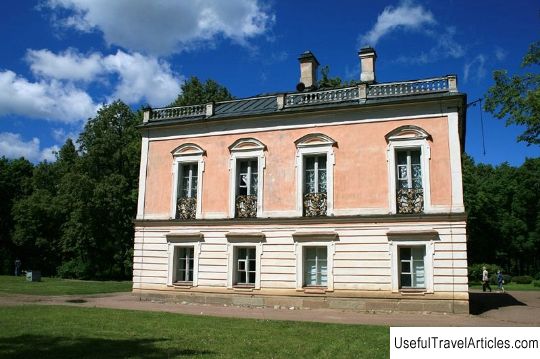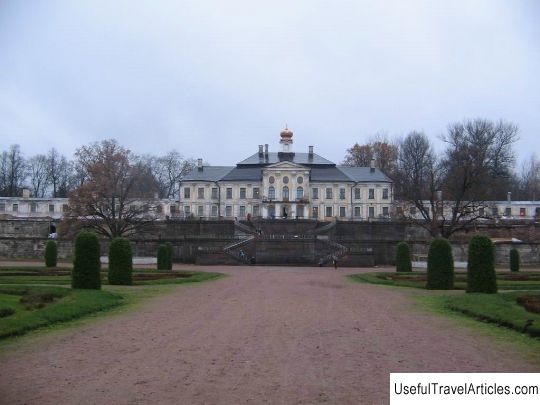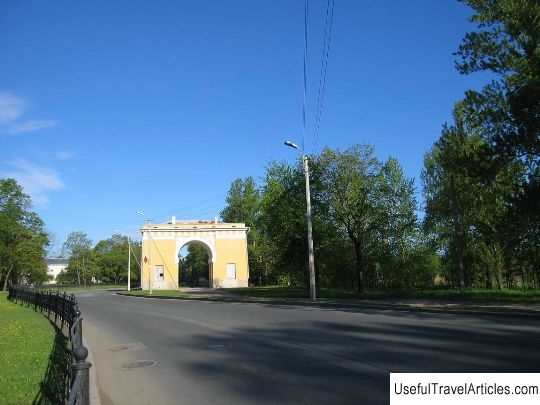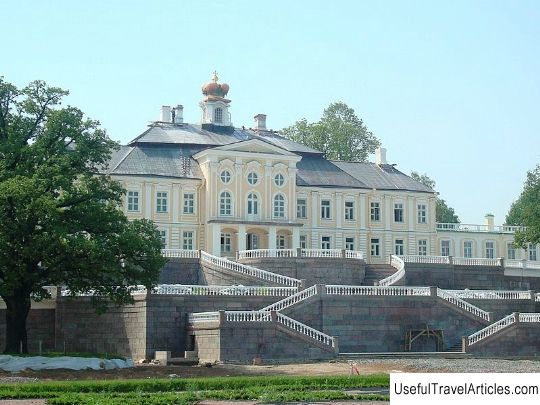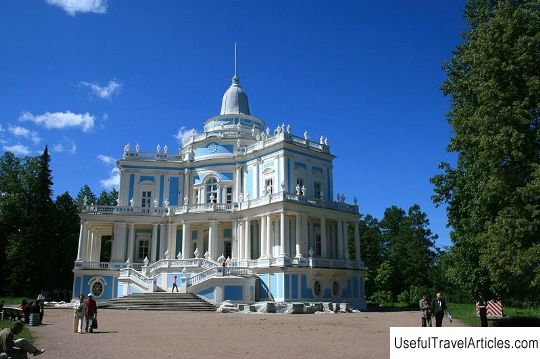Palace of Peter III description and photo - Russia - St. Petersburg: Lomonosov (Oranienbaum)
Rating: 8,4/10 (6790 votes) 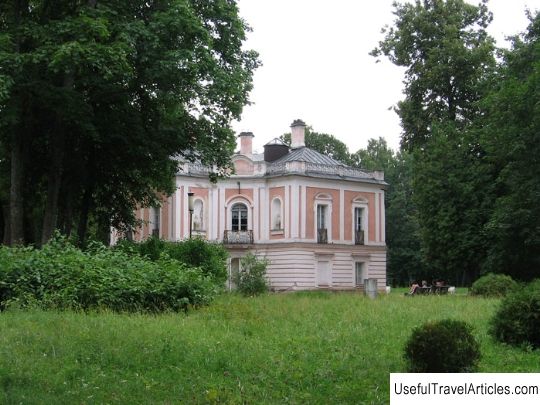
Peter III Palace description and photos - Russia - St. Petersburg: Lomonosov (Oranienbaum). Detailed information about the attraction. Description, photos and a map showing the nearest significant objects. Photo and descriptionThe palace was erected on the territory of the amusing fortress Petershtadt. The outlines of the fortress resembled a multi-pointed star, which was formed by embankments. The fortress was surrounded by a deep moat with 3 drawbridges, on 5 of its bastions cannons were installed. There were buildings for various purposes: the commandant's house, barracks for soldiers, houses for officers and generals, a guardhouse, an arsenal, a powder magazine, and a small Lutheran church. In the center of the fortress there was an arsenal yard, which was a 5-cornered parade ground, into the territory of which one could get through the entrance gate. A flotilla of galleys, frigates and boats was stationed on the Lower Pond. The garrison of the fortress consisted of a detachment of soldiers discharged from Germany. Next to the fortress there was an Italian garden with bridges, stairs, terraces, gazebos, cascades, fountains. All the wooden structures of the fortress and the garden were dismantled at the beginning of the 19th century. At present, only the palace of Peter III, the entrance gate, the remains of a moat and ramparts have survived from Petershtadt. Nothing remains of the original park layout. In 1952-1953, this site underwent reconstruction: around the palace there were 3 flower beds, new paths, on the lawns - marble sculpture. The external appearance of the palace of Peter III conquers with its simplicity and grace. The peculiar character of the composition, sophistication of the decor, surprisingly transparent proportions make it one of the most perfect works of Russian architecture of the 18th century. In the 18th century, the rooms on the ground floor contained service rooms without decor. Now they have an exposition, telling about the history of the palace and park complex of the city of Lomonosov. Six small rooms on the second floor - the Front, the Picture Room, the Pantry, the Study, the Boudoir, the Bedroom, have a decorative design in the character of truly palace rooms: fine carving, magnificent modeling, amazing lacquer painting, fabrics, painting, type-setting parquet flooring are superbly used in their decoration. The Picture Hall is the main building of the palace. In the 18th century, there were 58 paintings in the tapestry. They were separated from each other by narrow silvered frames. This tapestry hanging was created (according to the project of A. Rinaldi) by the architect J. Shtelin and the artist K. Pfanzelt. But in 1784, at the behest of Catherine II, most of the paintings were transferred to the Academy of Arts. The tapestry was destroyed, and it was recreated only in 1961-1962 according to the drawings found in the archives. Now the walls of the Picture Hall are decorated with 63 paintings, representing the paintings of West European artists of the 17th-18th centuries of the Flemish, Italian, German Dutch schools. Lacquer painting in the Picture Room, Study and Bedroom represent a unique type of decoration. The author is a Russian serf, `` varnish master '' Fedor Vlasov. The murals are in the style of decorative Chinese art. 218 compositions - on the doors, panels, door and window slopes of the palace. These are touching, naive fantasies on Chinese themes, into which the Russian master "put" his own sense of life in a country that is far away and mysterious for him. The lacquer paintings and the tapestry were restored by art restorers A.B. Vasilyeva, R.P. Sausen, B.N. Pugovkin, B.N. Kosenkov and others. The stucco decoration of the ceilings of the palace also attracts attention. Of particular interest is the preserved modeling of Boudoir. In the interiors of the palace you can see magnificent examples of furniture of the 18th century, made by Russian and Western European craftsmen, and porcelain products. The Palace of Peter III is the first surviving until our time the building of A. Rinaldi. It already traces the creative character of the architect, which was developed in his subsequent works, which identified him as an excellent master of the style of early classicism and rococo. In the interiors of the palace you can see magnificent examples of furniture of the 18th century, made by Russian and Western European craftsmen, and porcelain products. The Palace of Peter III is the first building of A. Rinaldi that has survived to our time. It already traces the creative character of the architect, which was developed in his subsequent works, which identified him as an excellent master of the style of early classicism and rococo. In the interiors of the palace you can see magnificent examples of furniture of the 18th century, made by Russian and Western European craftsmen, and porcelain products. The Palace of Peter III is the first building of A. Rinaldi that has survived to our time. It already traces the creative character of the architect, which was developed in his subsequent works, which identified him as an excellent master of the style of early classicism and rococo.      We also recommend reading Piazza del Duomo description and photos - Italy: Acireale (Sicily) Topic: Palace of Peter III description and photo - Russia - St. Petersburg: Lomonosov (Oranienbaum). |
